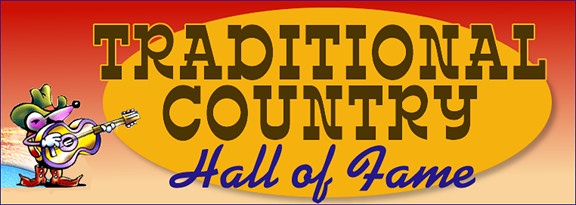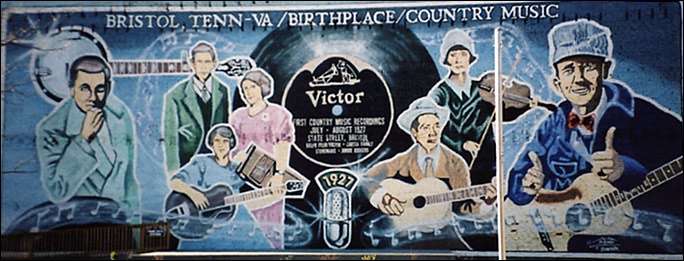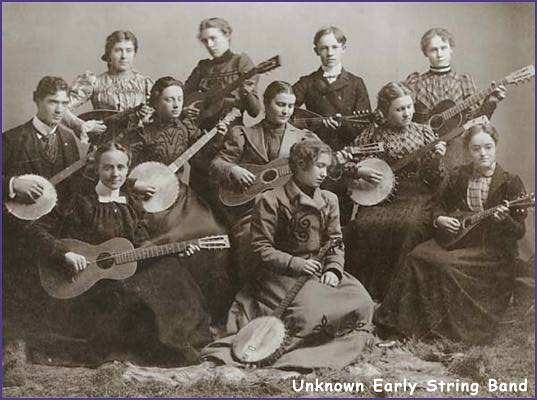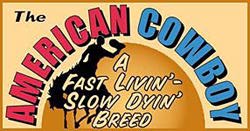WHAT'S
NEW
HERE:

Suzie Merwine
Bad Bob
JoseDaniel
Jimmy Bryant
Jerry Shea
Donn Reynolds
"King of the Yodelers"
JOHNNY PAYCHECK Profile Page
Hank Thompson "Live" by Barry Klein
Traditional Country Makes a Comeback
Hank Cochran Interviewed
Jerry Shea


Post a Message

All 12 Months
340K Packed Full of Country Music History

"A Web Site Within Itself" - CLICK HERE






Click to subscribe to the "TradCountryHoF"
E-mail Discussion Group
TCHOF PROFILES:
Bobby Austin
Profile Page
John Paul Jones
Profile Page
"Di Anne"
Profile Page
Joe Rickman
Profile Page
Joe Penny (Pennington)
Profile Page
Dennis Payne
Profile Page
Ronnie Sessons
Profile Page
Jackie Burns
Profile Page
Garlin Hackney Profile Page
Mickey Barnett Profile Page
Doreen Brown Profile Page
Becky Hobbs Profile Page
Wayne Pronger Memory Links
Kenny Roberts' Site
Shari Sumrall Profile Page
About Hank Williams Includes: Book Review
Kitty Houston Profile Page
Harold Sharp Profile Page
Barbara Dunn King Profile Page
GRADY MARTIN TRIBUTE PAGE
Post Your Comments
Ronnie Lee Twist
MESSAGES & COMMENTS: Read and/or Post
FRONT PAGE NEWS and
PAGE 2 (TIDBITS)
What's
Hot
Elsewhere:
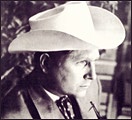
In Loving Memory of Redd Stewart
We would like to invite you to visit our newly launched
tribute site to Redd Stewart:
www.reddstewart.com,
a site launched in memory of Redd (writer of
Tennessee Waltz, You Belong To Me, Slow Poke,
Bonaparte's Retreat, and many more!)
Please sign our guest book so we know you stopped by!
Did you ever record, perform, or meet Redd
or Pee Wee King? We'd love to hear about it! Thank you.
Sharon Stewart,
Redd's daughter-in-law - sharon@reddstewart.com
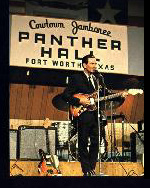
VISIT THIS GREAT HISTORIC VENUE'S WEB SITE

Hillbilly-Music.com
The People. The Music. The History. If you're
looking for information about country music,
its roots, its history and people, this is the
site for you. Artists. Groups. Disc Jockeys.
The old-time barn dances, jamborees and opry shows
- we try to cover. We invite you to come back
now and again as we're always finding new
information or one of the people that were part
of the history are telling us their story.
LEONA WILLIAMS Web Site

CLICK HERE
Hear Music from Garlin Hackney's Great CD
EL RANCHO WAYLON
Waylon Music, It's A Way Of Life!
Don't just read the saying ... "LIVE IT"
Put a
Traditional Country
Hall of Fame
Link on YOUR site:


WSM-AM 650,
Nashville, TN
America's Country Music Station,
Home of The Grand Ole Opry.
|
Hot Clicks
Traditional Country Artist's Bio
and Merchandise Links
Courtesy of COUNTRY.COM
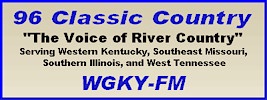
This Day in Country Music

CLICK HERE

TWANG-TOWN USA News/Messages
Overseas Country Radio Stations
Talent on Display

Analog or Digital
CLICK HERE
Featured On-Site
Artists Listed Below
These pages were created by the "Traditional Country Hall of Fame"
and the "Rockabilly Hall of Fame"
Allsup, Tommy
Ammons, Jimmie & Delta
Austin, Bobby
Barnett, Mickey
Brown, Doreen
Bryant, Jimmy
Cash, Johnny
Chapel, Leon
Cordle, Larry
Curry, Gerald
Darnell, R.G.
Day, George
Di Anne
Dilks, Johnny
Eaves, Jimmy
Felts, Narvel
Frizzell, Lefty
Gill, Kenny
Glenn, Glen>
Great Divide, The
Green, Logan
Grubbs, Jim
Hackney, Garlin
Hill, Tom
Hobbs, Becky
Hobbs, Lou
Hogsed, Roy
Houston, Kitty
Jackson, Wanda
Jones, John Paul
Jordanaires
JoseDaniel
King, Barbara Dunn
Lewis, Linda Gail
Light Crust Doughboys
Lister, Big Bill
Luquette, Blake
Masters, Sammy
Manuel, Joe
Mathis, Tommy
Meeks, Johnny
Merwine, Suzie
Mitchell, Carl
Montana, Patsy
">Morris, Col. Robert
Moore, Red
Mountain, Bobby
Nichols, Joe Paul
Oxford, Vernon
Payne, Leon
Progner, Wayne
Railmen, The
Rainwater, Marvin
Rasmussen, Ole
Rickman, Joe
Sharp, Harold
Jerry Shea
Dick Shuey
Smith, Warren
Sumrall, Shari
Texas 55
Todd, Eric
Twist, Ronnie Lee
Wilcox, George
Williams, Jett
Williams, Lew
Willis, Hall
Zack, Eddie
FOR SALE:
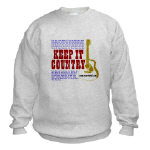
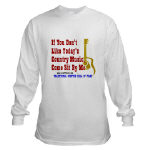
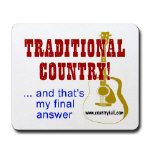

Several Items - Click Each of the Graphics to
Explore What's All Available

|
The History of WSM
In The Beginning
It was the middle of the "Roaring Twenties" and "The Jazz Age". All across America, folks were buying radio
sets by the thousands, anxious to become part of the new "miracle" which brought entertainment directly into
the living room. While radio today may be considered just one more of technology's modern conveniences, it was
quite the opposite in the mid-1920s. Back then, radio was a wondrous, big-as-outdoors marvel, filled with magic
and mystery. And it was in this spirit of wide-eyed amazement that the groundwork for WSM was laid.
The driving force behind the creation of WSM was Edwin W. Craig. Craig had joined his father's company,
the National Life and Accident Insurance Company, as a field representative fresh out of college and by
1922 he had risen to vice-president. It was around this time that Craig began tuning into the pioneer
radio stations which were popping up around the country.
In time, Craig began corresponding with a number of broadcast personalities, anxious to learn more about
radio's possibilities. He was soon convinced a radio station would enhance National Life's identity while
also providing a valuable public service to the community. The board of National Life readily agreed,
and appointed Craig to serve as the liaison between the parent company and its fledgling offshoot.
Craig was determined that the call letters of the new radio station would be "WSM" to reflect National
Life's motto: "We Shield Millions." Unfortunately, the U.S. Navy had already been assigned those letters.
Undeterred, Craig successfully petitioned the Secretary of Commerce to transfer the call letters and thus
was born WSM.
With characteristic foresight, Craig and National Life sought out the best and the brightest to build and
operate their new enterprise. Thomas L. Parks, a former ship board radio operator, was hired on as the Chief
Radio Engineer. Parks and his brilliant young Assistant Engineer John H. DeWitt (who would later go on to
become president of the station), installed the first thousand-watt transmitter at the antenna site
on Fifteenth Avenue, South in downtown Nashville.
WSM's first official broadcast day was October 5, 1925. As the eight o'clock opening ceremony approached,
hundreds of intrigued Nashvillians gathered beneath the loudspeakers mounted on the corners of Seventh and
Union. Others crouched over their improvised radio sets at home listening over their ear pieces.
Meanwhile, upstairs in the National Life Building, a group of company executives, government officials
and invited guests were busy getting ready for the hallmark event.
While the dignitaries applied last minute polish to their prepared remarks and dedication speeches,
two orchestras provided "live" entertainment over WSM via remote lines: Beasley Smith and his Orchestra
played in the Hermitage Hotel ballroom while Francis Craig serenaded diners at the Andrew Jackson.
Fittingly enough, both bandleaders would come to be closely identified with WSM's early programming.
By eleven o'clock, the speeches had been made and the evening took a lighter turn. National Life had
invited America's leading radio announcers to enliven the inaugural broadcast, and a parade of ad-lib
talent entertained those insomniacs who chose to stay up all night with their radios.
This all-star cast of personalities included the man who had just been awarded the "most popular radio
announcer" title from a radio publication poll, George D. Hay of Chicago's WLS. Hay, who worked under
the pseudonym "The Solemn Old Judge", was a 30-year-old former newspaperman with a keen wit who took
an instant liking to WSM and its surroundings. Apparently the feeling was mutual, and within a month
George Hay was hired on as the station's first Program Director. Hay wasted no time in creating new
shows. While the station relied mostly on classical and dinner music for its programming fare, the
night of November 28, 1925 would change all that forever.
It was on that late-fall Saturday evening that Hay introduced 77-year-old fiddler Uncle Jimmy Thompson as part of a
show Hay called the WSM Barn Dance. Hay would have been hard-pressed to find a more unassuming guest to
open his first show.
Thompson, it seems, was the inquiring type and his curiosity had brought him to Nashville to see not
only the town but National Life's much ballyhooed radio station where his niece was the staff pianist.
While touring the studio, the fiddler crossed paths with Hay and the conversation soon turned to fiddle
music. Before Uncle Jimmy knew it, he had won himself an on-air slot.
To say the show's format was informal would be an understatement. Most of the music was unwritten;
somebody would call a tune and away the musicians would go. The programs were almost exclusively
instrumental and featured a marked emphasis on fiddle tunes.
Saturday was traditionally "come to town" day in the South and the courthouse lawn was usually the designated
gathering place, attracting musicians and gossips alike. WSM's Barn Dance on Saturday night was becoming the new
courthouse of the airwaves, with Uncle Jimmy's fiddling serving as the clarion call to come to the WSM studio
to play and/or listen.
And come they did. In fact, so many people turned up at the small National Life studio that a new auditorium
soon had to be built to accommodate the overflow crowds. "We Shield Millions" had rapidly become "We Seat Many".
The WSM Barn Dance was based on a program Hay had hosted in Chicago, and although the Chicago show had been
successful, no one could predict how triumphant the new incarnation would be. Two years later Hay would
rename his show "The Grand Ole Opry" and it wasn't long before the Opry became known as one of the most
entertaining country music shows on radio.
Certainly one reason the Opry is so popular is the caliber of performers it has attracted over the years.
Whether it was Opry members from the past like Roy Acuff, Minnie Pearl, Hank Williams and Bill Monroe, or
contemporary members like Garth Brooks, Vince Gill, Reba McEntire and Alan Jackson, being part of the
Opry cast has always been considered the highest honor and the crowning achievement in a country performer's career.
Today, WSM's Grand Ole Opry stands as both the premium country music showcase and the longest running,
live radio show in history. On the air now for over 70 years, the Opry combines the pace and charm of a
1930's big-production radio show with the excitement of modern country music. Every Friday and Saturday night
hundreds of thousands of radio listeners across the country and thousands more in the Opry House audience savor
this unique blend of the old and the new.
The Air Castle of the South
Country wasn't the only music to be found on WSM, however. In addition to playing the pop music of the day,
WSM also featured a healthy mix of classical and dinner music.
By the time WSM observed its first anniversary, plans for increasing the station's power to 5,000 watts were
already in the works. (In those early days of radio, WSM's original 1,000 watt signal could already reach
listeners as far away as Nebraska and Puerto Rico.) With the increase in power came an affiliation with the
NBC Network, which allowed the station to expand its broadcast day to a full eight hours.
The increase in hours necessitated the addition of more staff members including Harry Stone, a young
businessman from a competing Nashville station who was appointed as General Manager in 1928. Stone's
tenure marked WSM's official entry into commercial broadcasting with the signing-on of numerous local
sponsors.
By late 1932, WSM had joined a small, elite group of maximum-power, Class 1-A, clear-channel broadcasters.
The stations new 50,000 watt status, coupled with the low 650 kilocycle frequency, made WSM a nation-spanning
giant. (Clear-channel status meant it was the only station in the entire U.S. permitted to broadcast on the 650
frequency.) At the heart of this expansion was a diamond-shaped, vertical antenna which was 878 feet high,
the tallest tower in North America at the time.
With the station's jump in power came an uncommonly talented group of on-air personalities, staffers and
technicians, all of whom contributed originality, inventiveness and skill to the operation. Their efforts
garnered much attention for WSM and in particular the Grand Ole Opry. Even Hollywood took notice, and in
1940 Republic Pictures produced The Grand Ole Opry, a full-length feature film starring Judge Hay,
Uncle Dave Macon and Roy Acuff along with other members of the Opry cast.
Not only was WSM instrumental in bringing country music to the world via film but the station
also played an integral role in establishing the city of Nashville as a recording center. Prior to
the 1940's, Southern musicians had to travel to New York, Chicago or other cities to make their records.
This all changed when engineers at WSM decided to expand their radio studio into a recording facility.
While WSM continued to spread the word that Nashville was a great town for music and musicians,
the station's engineers were now beginning to record that music. For some time WSM had been making
discs of their music programs in a manner very much akin to making a record. It was only a matter
of time then that these pioneering engineers would began to conduct actual recording sessions in
the station's studios.
Although RCA Victor had recorded in Nashville as early as 1928, the first modern country recording was made
at the WSM studio in 1944 by Eddy Arnold. In 1947, one of the first million-selling records to come out of
Nashville was made in WSM's studio "C"; "Near You" by pop bandleader Francis Craig and his Orchestra.
Later, these same WSM engineers would look to other locales to perfect their recording techniques and
they soon fashioned a studio out of the ballroom of the now defunct Tulane Hotel. Dubbed "Castle Studio"
(after the station's nickname "Air Castle of the South"), it was the busiest studio recording country
music in the early 1950's. Another favorite recording location was the Ryman Auditorium in downtown
Nashville. Aside from being known as the Mother Church of Country Music, the Ryman is also world-famous
for its extraordinary acoustics making it an ideal locale for live recording, a practice which
continues there to this day.
The initial success of WSM's early recording efforts was enough to convince others that Nashville had a
viable future as a music industry center. It wouldn't be long before record labels set up shop in Nashville
on what was to become "Music Row", marking the beginning of an expansion which would eventually earn
the city the nickname "Music City USA". In fact, it was WSM personality David Cobb who came up with
the nickname. And the man generally considered the father of Music Row's recording industry was WSM's
former musical director Owen Bradley.
The First Commercial FM Station in America
By the late 1930s, the communications industry was in the throes of rapid change. WSM's Chief Engineer "Jack"
DeWitt had been following the progress of "high frequency" broadcasting closely, as he had an eye on
eventually expanding the station's holdings. Finally, in 1941, WSM continued its role as an industry
trailblazer by giving America its first commercial FM station at an assigned frequency of 44.7 megaHertz.
DeWitt, who had manned the audio controls at the first Opry broadcast, was the driving force behind
this new venture.
WSM's FM operation first went on the air under the designation "W47NV." The call-code was a
combination of the "W" (radio) prefix, the number forty-seven for the last two digits of the
assigned frequency, and the letters NV representing Nashville. The station operated with an
effective radiated power of 65,000 watts and cast a healthy signal into Kentucky and Alabama.
In 1947, the Federal Communications Commission reappraised its pre-war rulings and moved the commercial
frequency modulation to 100.1 Mhz. In the process, the station re-designated itself "WSM-FM". Four years
later, DeWitt saw greater promise in the new medium of television and WSM-FM and its all-classical programming
format went off the air. Continued Growth
WSM's absence from the FM airwaves, however, was temporary, for in 1968 WSM purchased an existing station,
WLWM-FM, and used the frequency to return to the FM band at 95.5 Mhz. Soon after WSM AM and WLWM-FM's move
to the Opryland complex in 1982, WSM Radio and the Associated Press launched the Music Country Radio
Network (MCRN). MCRN was a late-night programming service broadcast via satellite.
WSM became Nashville's first AM stereo station on December 6, 1982 before WSM-FM made its debut
as "Nashville 95 FM - "The New Country" the following month.
Excellence in Broadcast Journalism
While the musical legacy of WSM is certainly a rich one, it's not the only part of their programming day
which has earned the station a national reputation. Since 1925, generations of Americans have depended on WSM as
their source of news and information and with good reason - WSM is serious about its news operation and it
shows. By combining seasoned, professional journalists with state-of-the-art technology, its audience is
ensured of getting the fastest, most accurate information available. It's dedicated to providing full
coverage of national as well as regional events, and often furnishes the only radio coverage in the area.
Maybe that's why WSM stands as one of the most honored news operations in the country. In 1995 the station
received the coveted George Peabody Award (the Pulitzer Prize of broadcast journalism),
the Scripps-Howard Foundation National Journalism Award, and the Edward R. Murrow Award
... all in the same year. And it doesn't end there. In fact, WSM News has received over 100 awards since 1984.
As nice as it is to be recognized by the music industry though, it's even more important to give back to the
community. WSM News prides itself on taking an active role in helping to solve the issues we cover. A five-part
series "A Stalker's Prey" for instance, has been requested by numerous domestic violence shelters, and is
currently being used in their educational programs.
WSM was founded on the principles of good will and public service, and it continues to uphold those
same standards today, over seventy years later. Many radio stations have come and gone since 1925,
but WSM remains a nationally-known leader and major influence in the broadcast industry. WSM ... three letters
that stand for the best radio has to offer.
Courtesy: WSM

